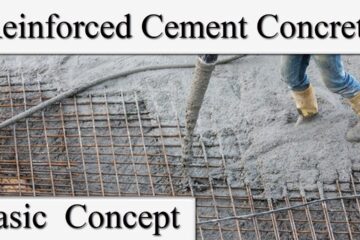The Ultimate Guide to Construction Cost Estimation: Save Time and Money
Introduction
Construction projects are complex undertakings that require meticulous planning and precise execution. One of the most crucial aspects of any construction project is cost estimation. Accurate cost estimation can make the difference between a successful project and one that goes over budget and off schedule. In this ultimate guide to construction cost estimation, we will explore the essential components, methodologies, and tips to help you save both time and money.

What is Construction Cost Estimation?
Construction cost estimation is the process of predicting the expenses associated with a construction project. This includes direct costs like materials and labor, as well as indirect costs such as permits and administrative expenses. Accurate cost estimation is vital for budgeting, securing financing, and managing resources effectively throughout the project lifecycle.
The Importance of Accurate Cost Estimation
Budgeting and Financial Planning
Accurate cost estimation is the foundation of effective budgeting. Without a precise estimate, it’s impossible to determine how much funding is required. This can lead to financial shortfalls and project delays.
Resource Allocation
Proper cost estimation ensures that resources such as materials, labor, and equipment are allocated efficiently. This helps in avoiding wastage and optimizing the use of available resources.
Risk Management
Construction projects are inherently risky. Accurate cost estimation helps in identifying potential financial risks and implementing mitigation strategies. This can prevent cost overruns and ensure that the project stays on track.
Stakeholder Confidence
Stakeholders, including investors and clients, need assurance that the project will be completed within budget. Accurate cost estimation builds confidence and trust among stakeholders.
Key Components of Construction Cost Estimation
Direct Costs
- Materials: The cost of raw materials required for the construction project. This includes everything from concrete and steel to paint and fixtures.
- Labor: Wages and salaries paid to workers involved in the project.
- Equipment: Costs associated with the purchase, rental, and maintenance of construction equipment.
Indirect Costs
- Permits and Licenses: Fees paid to obtain the necessary permits and licenses to begin construction.
- Administrative Costs: Expenses related to project management, legal fees, and insurance.
- Contingency: An allowance for unexpected expenses or cost overruns.
Methods of Construction Cost Estimation

Preliminary Estimate
A preliminary estimate, also known as a rough order of magnitude (ROM) estimate, is an initial approximation based on limited information. It is typically used in the early stages of project planning to provide a ballpark figure.
Detailed Estimate
A detailed estimate is a comprehensive and precise calculation of all costs associated with the project. It is based on detailed drawings, specifications, and a thorough analysis of all project components.
Quantity Takeoff
Quantity takeoff involves measuring and listing the quantities of materials required for the project. This data is used to calculate the cost of materials and is a crucial step in detailed cost estimation.
Unit Cost Estimation
Unit cost estimation involves calculating the cost per unit of each material, labor, and equipment component. This method is useful for projects with repetitive tasks, such as residential housing developments.
Parametric Estimating
Parametric estimating uses statistical relationships between historical data and project variables to predict costs. It is a quick and efficient method, especially for large projects with available historical data.
Bottom-Up Estimating
Bottom-up estimating involves breaking down the project into smaller components and estimating the cost of each component individually. The total project cost is then calculated by summing the costs of all components. This method is highly accurate but time-consuming.
Steps in Construction Cost Estimation
1. Define the Project Scope
Clearly define the scope of the project, including the work to be done, the materials required, and the project timeline. A well-defined scope ensures that all aspects of the project are considered in the cost estimation process.
2. Develop a Work Breakdown Structure (WBS)
A WBS is a hierarchical decomposition of the project into smaller, manageable components. It helps in organizing the project and ensures that all elements are considered in the cost estimation process.
3. Gather Cost Data
Collect cost data from reliable sources, such as suppliers, subcontractors, and historical project data. Ensure that the data is current and relevant to the project.
4. Perform Quantity Takeoff
Measure and list the quantities of materials required for the project. This step is crucial for calculating the cost of materials accurately.
5. Apply Unit Costs
Calculate the cost per unit of each material, labor, and equipment component. Multiply the unit costs by the quantities obtained in the quantity takeoff step to determine the total cost of each component.
6. Include Indirect Costs
Consider all indirect costs, such as permits, administrative expenses, and contingency allowances. These costs are often overlooked but can significantly impact the overall project budget.
7. Review and Validate
Review the cost estimate for accuracy and completeness. Validate the estimate by comparing it with historical data and industry benchmarks. Make adjustments as necessary to ensure the estimate is realistic and reliable.
Common Challenges in Construction Cost Estimation

Inaccurate Scope Definition
An incomplete or unclear project scope can lead to inaccurate cost estimates. Ensure that the scope is well-defined and includes all aspects of the project.
Unforeseen Conditions
Unexpected site conditions, such as soil problems or hidden utilities, can cause cost overruns. Conduct thorough site investigations to identify potential issues early.
Price Fluctuations
Material prices can fluctuate due to market conditions, affecting the accuracy of cost estimates. Keep abreast of market trends and consider potential price changes in the estimation process.
Labor Shortages
Labor shortages can lead to increased labor costs and project delays. Plan for labor availability and consider potential shortages in the cost estimation.
Incomplete Data
Inaccurate or incomplete data can result in faulty cost estimates. Ensure that all data used in the estimation process is accurate, current, and relevant to the project.
Tips for Effective Construction Cost Estimation
1. Use Reliable Data Sources
Use reliable and up-to-date data sources for cost information. This includes supplier quotes, historical project data, and industry benchmarks.
2. Involve Experienced Estimators
Involve experienced estimators in the cost estimation process. Their expertise and knowledge can help in identifying potential cost factors and ensuring the accuracy of the estimate.
3. Regularly Update Estimates
Regularly update cost estimates to reflect changes in project scope, market conditions, and other variables. This helps in maintaining the accuracy and relevance of the estimate.
4. Conduct Risk Analysis
Conduct a thorough risk analysis to identify potential cost risks and develop mitigation strategies. This helps in managing unexpected expenses and keeping the project within budget.
5. Use Estimation Software
Utilize construction cost estimation software to streamline the estimation process. These tools can improve accuracy, save time, and provide detailed reports for analysis.
The Role of Technology in Construction Cost Estimation
Building Information Modeling (BIM)
BIM is a digital representation of the physical and functional characteristics of a building. It allows for precise cost estimation by providing detailed information on materials, quantities, and project scope.
Estimation Software
Construction cost estimation software, such as ProEst and RSMeans, can automate the estimation process, improve accuracy, and provide detailed reports for analysis.
Drones and Aerial Surveys
Drones can be used for site surveys, providing accurate data on site conditions and measurements. This information is invaluable for precise cost estimation.
Artificial Intelligence (AI) and Machine Learning
AI and machine learning can analyze vast amounts of data to identify patterns and predict costs. These technologies can improve the accuracy of cost estimates and identify potential cost-saving opportunities.
Conclusion
Accurate construction cost estimation is crucial for the success of any construction project. By understanding the key components, methodologies, and challenges, you can develop precise and reliable cost estimates. Utilize technology and follow best practices to streamline the estimation process and ensure that your project stays within budget and on schedule. With the ultimate guide to construction cost estimation, you are well-equipped to save both time and money on your next construction project.
If you want to get more knowledge about this so read more.
If you want more articles about Civil Engineering click on link.





